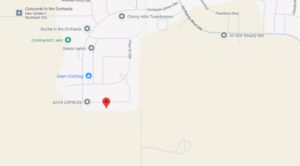Ecological History of South Edmonton, Alberta
August 13, 2025 By: Sunisha Rakesh
Location: 9459 Pear Cres SW Edmonton

Ecological History of South Edmonton, Alberta
Course: HIST_ 3991
Student Name: Sunisha Rakesh
Student ID: T00609237
Date: 2025/08/13
My hometown is South Edmonton, Alberta. According to Wikipedia, the city is situated in Treaty 6 territory, the traditional land of the Cree, Saulteaux, Nakota Sioux, Blackfoot, and Métis peoples. These groups lived here for thousands of years before European contact. Their sources of livelihood included farming, hunting, fishing, gathering plants, and trading with other indigenous communities. The city was referred to as Amiskwaciy Waskahikan, meaning “Beaver Hills House” in Cree, because it served as a meeting and trading place for many First Nations people (EdmontonHomes.ca). Europeans later renamed the city Edmonton.
Archaeological analysis indicates that people began migrating into the region as early as 10,000 BC (Wikipedia). The presence of the Old North Trail passing through Old Strathcona proves that people have travelled through this area for thousands of years. The early communities valued their ecological relationship with the land. Edmonton Homes notes that they hunted animals such as moose and caribou in the north and relied on bison on the plains. They believed in the sustainable use of environmental resources for the present and future survival of the community.
European settlement in the Edmonton area began in the late 1700s, and in 1795, the North West Company set up Fort Augustus near present-day Fort Saskatchewan (Edmonton Homes). A few months later, the Hudson’s Bay Company (HBC) followed with the establishment of Edmonton House, also known as Fort Edmonton. These trading posts eventually became the center of fur trading for the entire North Saskatchewan District (Open Government Program). In 1821, the HBC and North West Company merged their operations and made Fort Edmonton even more important as a trading center.
People started dwelling outside the fort in the 1870s, as pioneer farmers began building log cabins along the river. The land was divided into “river lots” as per the direction of the river rather than the usual grid pattern. Although the town of Edmonton was officially established in 1894, my area, south Edmonton, began to develop when the Calgary & Edmonton Railway reached here in 1891 (Wikipedia). This original settlement became known as Strathcona, which later merged with Edmonton in 1912 (Edmonton Homes). After World War II, South Edmonton experienced rapid growth. New suburbs appeared, and many farmlands were turned into housing developments. Today’s South Edmonton is home to major institutions, including the University of Alberta and several colleges.
The wildlife history of South Edmonton is fascinating. Unlike today, animals such as bison, moose, wolves, black bears, and beavers once roamed freely in the area (City of Edmonton). Birds, such as woodpeckers, magpies, and ravens, were also common, as were amphibians like frogs and salamanders in the numerous wetlands. Unfortunately, urban expansion caused significant changes. Although some wildlife still exists, large mammals have become rare in the inner city. However, deer, coyotes, squirrels, and raccoons are still commonly seen in South Edmonton’s parks and green belts (City of Edmonton). We occasionally see deer wandering into green spaces and hear owls at night. We also have an unfortunate experience with invasive species. Although the Norway rat is strictly controlled in Alberta, they sometimes manage to sneak in. Moreover, the common starling and house sparrow, brought from Europe, now crowd out native birds. We have also had incidences of creeping bellflowers in our gardens, which spread quickly and outcompete native flowers.
Nevertheless, I admire the positive stewardship efforts in South Edmonton. Our leaders have installed stormwater management systems in new neighborhoods to help collect and clean runoff before it reaches creeks like Whitemud Creek. They also reduce the risk of flooding and help protect local water quality. Furthermore, several community gardens now exist in my area, and I like how these spaces offer residents the opportunity to grow healthy foods and learn from one another in the process. Some even include composting stations to reduce household waste and support sustainable gardening. Various gardens in the neighbourhood also cultivate native plants to support pollinators, such as bees and butterflies. For example, South Edmonton’s Whitemud Creek Ravine is a vital natural corridor that continues to support native species.
We are also proud to have the Banff National Park in the region. The park was established in 1885 as Canada’s first national park and has since become the most visited in the nation (Wikipedia). Before it became a park, the area was home to many Indigenous groups, including the Stoney Nakoda. They used the land for hunting and performing spiritual ceremonies. Many of Banff’s natural features still bear Stoney Nakoda names (Wikipedia). Banff is home to several wildlife species, such as grizzly bears, elk, moose, and over 260 bird species (Wikipedia).
South Edmonton may sometimes feel far from the wilderness of Banff, but the cold winters and open skies still connect us to Alberta’s wild spirit. On clear nights, we often enjoy the sight of the Northern Lights’ dancing waves of green and purple in the sky. These moments remind us how close nature still is despite the urban growth all around us.